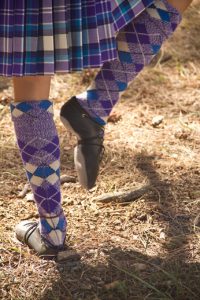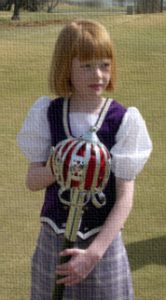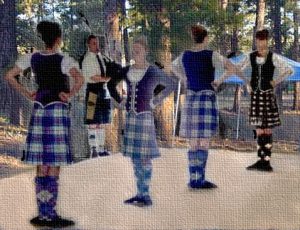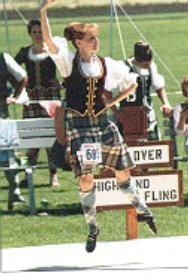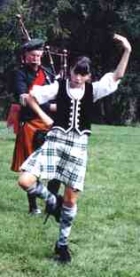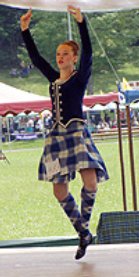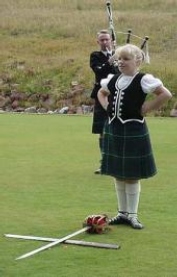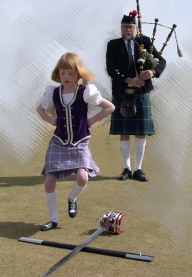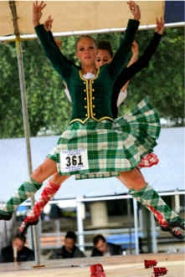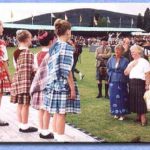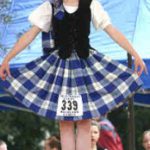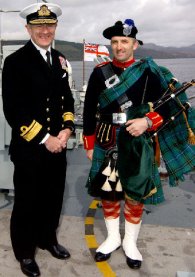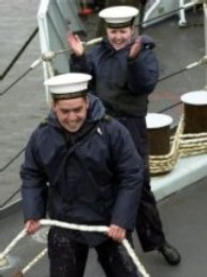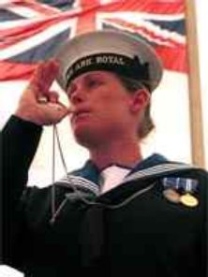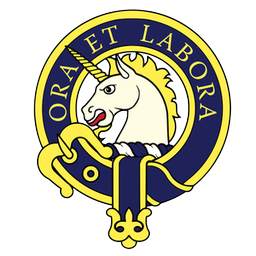Dance competitors: Please follow this link to register for the 2025 Elizabeth Celtic Festival Highland Dance Competition. It contains both an online/digital registration option and the PDF for you to print if you prefer. Thank you! -Webmaster
A Guide to the Highland Dancing Competition
-Assembled by Neil Gillette 1/2019
Highland dancing is a marvelous combination of movement, costume, and tradition. All of the dances have interesting stories and traditions associated with them, and in some cases, the dances themselves tell a story. Knowledge of the traditions and some of the more elementary technical points should make the Highland Dance Competitions more interesting to watch.
First, you’ll be seeing all the dancers competing in the same three dances: The Highland Fling, the Sword Dance, and the Sean Truibhas (pronounced roughly, ‘Shawn Trews’). These three dances represent the core of Highland dancing, and in them, you’ll see movements of arms and legs which will occur in most of the other dances. The Highland Fling is perhaps the most familiar of all the dances. It’s danced to a strathspey, a form of dance music unique to Scotland. In the first few steps, you’ll see a movement called “shedding”; it consists of pointing one foot directly out to the side and then quickly moving it to the back of the leg, then around the calf to the front of the leg, then again around to the back. Check to see that the knee of the working leg is well turned out so that the front of the kilt (the “apron”) is flat. Also, observe that the feet are pointed almost all the time. The Highland Fling is “the dance of victory” and should seem full of joy and spirit; therefore the dancers should be smiling throughout the dance.
The Sword Dance is also quite well known. Its history appears to date back to the 11th century in Scotland when Malcolm Canmore was King. Tradition relates that when he met and defeated one of Macbeth’s generals in a battle, Malcolm placed his sword of that of his fallen adversary and then danced over the crossed swords.
Another tradition associated with the Sword dance suggests the superstitious nature of the Highland Scots. It has been said that the Highlanders would perform this dance when seeking an omen for a forthcoming battle or raid. Legend had it that if the dancer touched the sword, he would be wounded in the battle; if he displaced the sword, then he’d be killed.
The Sean Truibhas is the third dance. The name in Gaelic means “old trousers.” This dance has often been associated with the proscription of the kilt after the disastrous defeat of the Jacobite clans at the Battle of Culloden in 1746. The English banned the wearing of any “plaid” (tartan) material in any form, banned the playing of the pipes, broke up private schools, and curtailed the clans’ powers and influence. The banning of tartan forced the adoption of trousers as standard attire, the wearing of which was an affront to a Highlander’s masculinity.
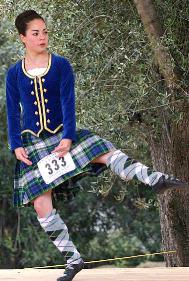
In this dance, note the “kicking” motion which suggests that the Highlander is trying to kick off the hated pants, perhaps trying to convey the difficulty of dancing in the true Highland style while having to wear English “breeks” (britches). You’ll see the dancers clap their hands once to signal to the piper to go into a faster tempo. This quick-time part of the dance resembles the Highland Fling in many ways and is something of a “dance of victory” in its own right, for in 1782 the ban on tartan was officially lifted and the Highland Scots could once again wear the kilts made of the old clan tartans!
The Strathspey and Half Tulloch will be danced by the premiers Saturday afternoon and is one of the few dances where competitors dance in a group. The Strathspey and Highland Reel is more basic and will be danced by the pre-premiers Sunday morning.
There is a story that one winter’s Sunday morning, the minister of a Kirk (church) in the Highlands was late in coming, and he had the keys to the door. With the congregation waiting and getting colder by the minute, someone came up with the Strathspey dance as a way to keep warm. The word “strathspey” is Scots for “Valley of the Spey River.” The Strathspey Region is in Northeast Scotland, renown for its fiddlers and its dancing. The word “reel” is actually a Norse word, and the music originally was from the Vikings. It’s fast and driving, just like the Vikings of old. The “Half (Reel of) Tulloch” the Northern Highlands and is a version of the longer (or full) “Reel of Tulloch.” It was considered “the King of the Reels” and by tradition, was the last dance held at a Ceilidh (pronounced: ‘Kay-lee,’ the Gaelic word for “party”). The audience may be familiar (sort of) with this tune: it was the music in the first big battle scene of Braveheart (the Stirling Bridge battle). Reels are king!
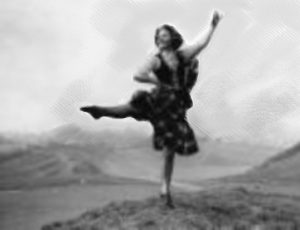
The Scottish Lilt falls into a somewhat different category than the preceding three dancers: it’s one of a type termed “National Dances.” A majority of national dances tend to be a bit more graceful than the vigorous “Highland Dances” (the Fling, etc.). Originally, many of these national dances were the domain of female dancers (just as the Highland dances were restricted by custom to men). But as barriers were eliminated, both men’s and women’s steps were included in the nationals.
You’ll notice a different type of attire being worn by the female competitors; this is what is called Aboyne (or national) costume. At the Aboyne Highland Games, not far from Braemar in northeast Scotland, the authorities involved with the Highland Dance competitions felt it was inappropriate for women to be wearing what was then considered men’s attire, the kilt. After researching traditional and historical sources, they established the style that you see today.
The Scottish Lilt is a flowing “lilting” dance. And unlike the three basic Highland dances which are dances to strathspeys, the music here is a 9/8 retreat (generally the melodic “Battle of the Somme”) or a slip jig.
Two other national dances in which female dancers wear the Aboyne costume are the Flora MacDonald’s Fancy and the Blue Bonnets, both of which will be danced on Sunday along with the Scottish Lilt. Also included in the “National Dance” category are two great dances: The Scottish version of the Irish Jig and the Sailor’s Hornpipe.
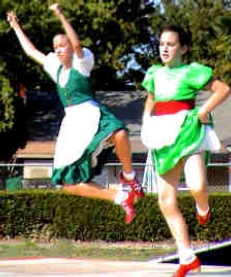
The Irish Jig is danced in a costume which appears derived from the stereotyped “Irish Washerwoman.” Tradition has two stories concerning the jig. In one story, it’s an angry Irish washerwoman who is scolding (probably using Gaelic swear words) some mischievous boys who pulled her clean laundry off the clothes-line and trampled it in the mud. In the other story, it’s an angry wife scolding her husband for staying out quite late and coming home quite drunk. And in this dance, you’ll notice the dancers don’t smile. In the Irish jig you’ll notice the dancers are wearing what is called a “jig-shoe”–basically similar to a dance slipper, but having a heel which has a “clacker” in it. This adds a percussive quality to the jig, remotely as a tap shoe does to a tap dance. The Sailor’s Hornpipe is much the same. You’ll notice that the steps mimic the various duties of a sailor from the days of sailing ships. These motions suggest hauling in the ratlines, climbing the rigging, standing lookout and saluting officers.
The costume is a replica of the standard British seaman’s uniform; the hats are authentic and some even bear the name of a ship of Her Majesty’s Royal Navy.
The music for this dance is also called a hornpipe, and it should be noted that with the transition to steamships and oil burners, a great majority of ships had ship’s pipers.
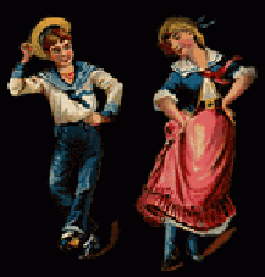
Some of the tunes even commemorate ships and Scottish sailors (“H.M.S. Renown,” “Champion of the Seas,” (named for the fastest clipper ship ever, like the ship shown below) and “Jim Tweedy’s Sea Legs” (sea legs refer to a particular type of walk that has a wider stance, in order to keep balanced and upright when the ship’s deck is constantly “rolling” back and forth while underway on the sea)
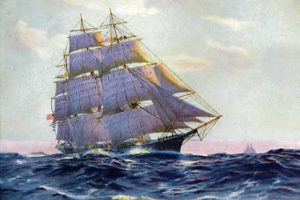
The Competition here at the Elizabeth Celtic Festival is conducted and judged in the same manner as Highland dance competitions the world over. This is due to the world-wide acceptance of the Scottish Official Board of Highland Dancing and it’s rules and regulations. The various levels of competitors and the certification of judges allow dancers from our region to compete and win in other parts of North America and even Scotland.
